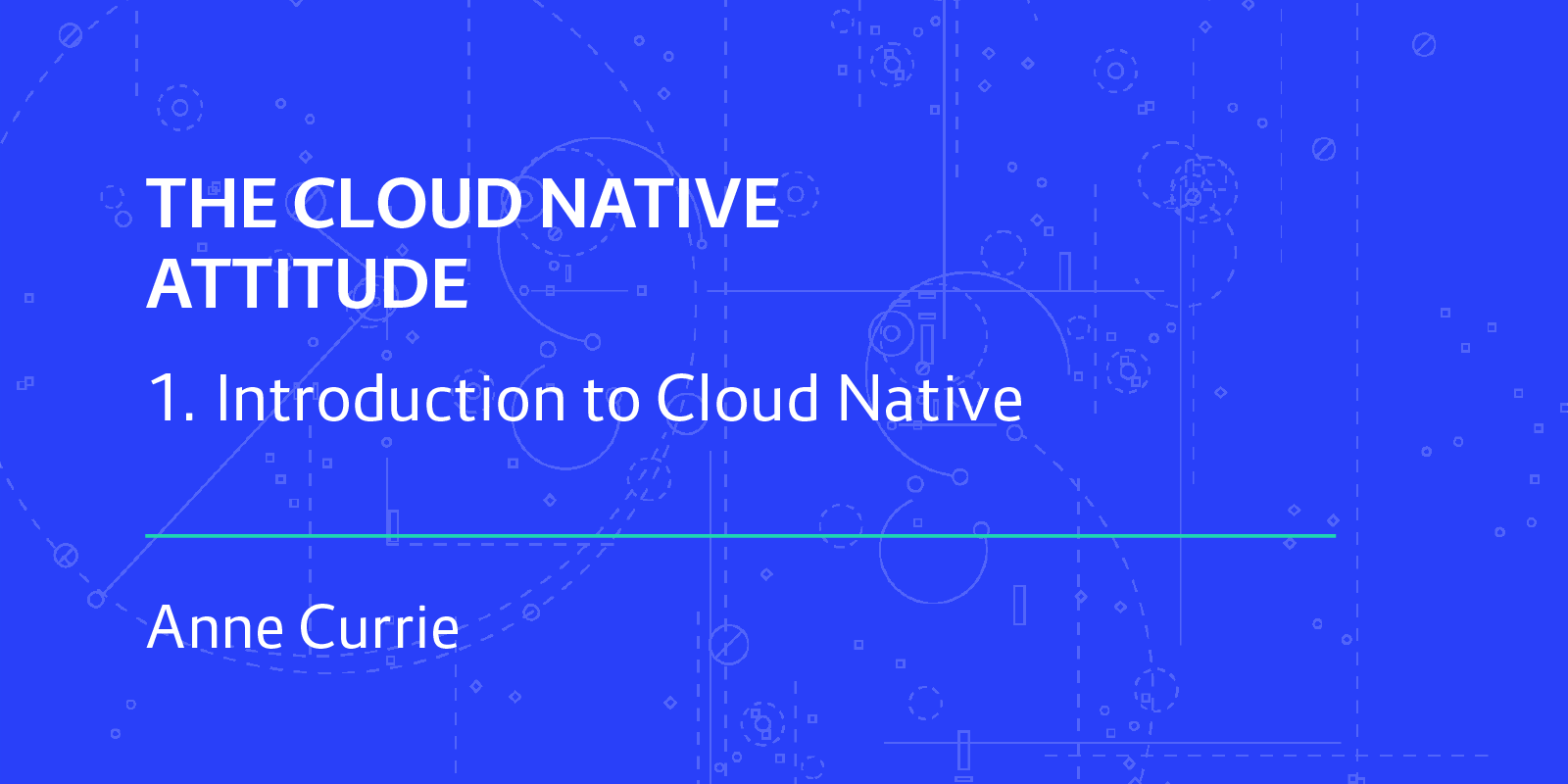Get our new O' Reilly book: "Cloud Native Transformation: Practical Patterns for Innovation"
This post follows on from our first post on Cloud Native Transformation Patterns: Introduction and Cloud Native Transformation Patterns: Executive Commitment.
As we saw from the previous post, Executive Commitment is a pattern that needs to be in place at the very start of any migration to the cloud. Cloud Native transformation requires significant changes throughout the entire organization, including technical, structural and human aspects, and requires the dedication of adequate resources to see it through.Once this crucial support from the very top of the organization has been established, it is time to move on to the Vision First pattern.
First, however, let us consider two contributing patterns: Transformation Strategy and Transformation Specialist. These are standalone patterns in their own right, both fairly straightforward and brief. However, since they are also essential components of the Vision First pattern, we shall give them a quick overview first
Transformation Strategy
This pattern follows immediately upon the successful achievement of Executive Commitment. With the organisation united in prioritising the Cloud Native transformation and aligned around common goals, the management team has reached the proper point for creating a high level transformation plan. They set objectives for the migration and begin delegating responsibilities to the teams. Teams need to be have the independence to interpret the objectives and translate them to actions within their own context.
Transformation Champion
In conjunction with formulating the Transformation Strategy, the organisation’s leaders need to appoint a Transformation Champion: a single person or small group of people in charge of leading and evangelising the transformation. The Transformation Champion needs to understand both the scope of the project and the company’s objectives. They must also be well connected with the various different groups composing the organisation, and highly motivated to promote the transformation throughout.
Vision First
What's the Context?
So, congratulations: your company has decided to move forward with a Cloud Native transformation! You’ve established clear Executive Commitment, come up with a Transformation Strategy and the Transformation Champion has been anointed.
Now it is time to define a clear and achievable vision that can be translated into specific, executable steps for each department taking part in the transformation.
The problem to contend with
Creating this vision is a bit tricky, because Cloud Native is still such a new field and most enterprises have limited knowledge of, much less practical experience with, it. The challenge of the Vision First pattern is to provide general organisational and technical guidance, broken down into pragmatic processes, that will lead to a consistent and coherent solution across the organisation.
This is even more challenging for enterprises operating in an Agile environment -- strong pressure on incremental delivery means also needing to build in time for crucial reflection and research while the transformation is underway. A natural step for most organisations at this context is to spend only little time on task planning and then immediately move to implementation, as befits Agile iterative pressure.
The combination of limited experience and lack of slack for research and experimentation with the new tools at hand leads to the implementation of Cloud Native technologies in the “well known ways” -- using outdated techniques and methods from before the transformation. While this creates the temporary illusion of fast progress, it will ultimately lead to at best limited success, and at worst complete failure of the endeavor.
Forces at play
Forces at play in the Vision First pattern context include:
- Cloud Native is a hot buzzword and many companies feel obliged to implement it even when not relevant or helpful for their business.
- There are many Cloud Native vendors promoting their “complete solutions” to the transformation challenges -- but implementation of the tech and tools is still a long and costly process.
- Lacking consistent vision, different teams across the organisation will make independent -- and, frequently, conflicting -- architectural decisions.
- Agile methodologies, popular among modern enterprises, create pressure to produce results early and onboard teams to new systems quickly
The solution
The Vision First pattern requires organisations to invest careful thought up front to visualize the system as a whole -- not just a sum of its separate parts (leave that for the Microservices patterns). The vision needs to be high level enough to be produced quickly yet clear enough to provide guidance. Also, flexible enough to allow freedom of choice during implementation -- while still being detailed enough to avoid common pitfalls.
See? Tricky. Creation of the vision may actually take weeks, or even months. This is why Executive Commitment, as well as leadership by the Transformation Champion, are crucial co-patterns for Vision First. Bonus task for the Agile enterprise: if any necessary technical information is unavailable to the team, it will need to be gleaned from external sources, or uncovered by series of small research/prototyping projects -- so that vision will also need to build in room to experiment.
A brand new context
Having completed the Vision First pattern, all teams in the organisation will have clear guiding principle for the implementation phase. They can now start producing the lower level architecture and translate it to the backlogs of tasks.
The overall scope of the full Cloud Native transformation can now be estimated, and appropriate resources and budgets be allocated to the transformation.
Related patterns:
Executive Commitment, Core Team, Transformation Champion, Transformation Strategy
The patterns appearing in this blog are condensed from the forthcoming book, Cloud Native Patterns: Architecture, Design and Culture. Complete and in-depth information regarding each pattern, including case studies from real-world Cloud Native enterprise migrations, will be found in the book — please check back for updates regarding the publication date in 2019!
Interested to know more about Cloud Native? Download our free eBook below:





 Previous article
Previous article
